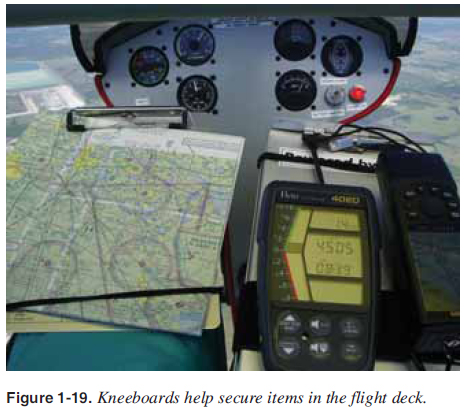
 |
|
||
CHAPTER 1. Introduction To Weight-Shift Control Scenario-Based Training A good instructor immediately begins teaching ADM when the student has the ability to control the WSC aircraft confi dently during the most basic maneuvers. The instructor incorporates “scenario-based training” in which the instructor provides pilot, aircraft, environment, and operational risk elements to train the student to utilize ADM in making the best decision for a given set of circumstances. During a profi ciency or practical test, the instructor or examiner evaluates the applicant’s ability to use satisfactory ADM practices as the pilot determines risks and coordinates safe procedures. Resource Management Resource management is similar to that described in the Pilot’s Handbook of Aeronautical Knowledge (FAA-H-8083- 25) except the passenger cannot help in the same ways as in an airplane. The passenger cannot hold or help read the map unless the pilot has provided a knee board or other means for the passenger to assist. [Figure 1-19]  In addition to having the passenger scan the skies for other aircraft, the passenger can maintain control of the aircraft for short periods as the WSC is relatively easy to fl y straight. This permits the pilot to perform unanticipated flight deck functions during fl ight. Overall, prefl ight planning and passenger briefi ngs are additional tasks of resource management for the WSC aircraft. Use of Checklists Checklists have been the foundation of pilot standardization and fl ight deck safety for many years and the fi rst defense against the error chain that leads to accidents. [Figure 1-20] The checklist is an aid to the fallible human memory and helps to ensure that critical safety items are not overlooked or forgotten. However, checklists are of no value if the pilot is not committed to their use. Without discipline and dedication in using a checklist, the odds favor the possibility of an error.  The importance of consistent use of checklists cannot be overstated in pilot training. A major objective in primary fl ight training is to establish habitual patterns that will serve pilots well throughout their fl ying careers. The fl ight instructor must promote a positive attitude toward the use of checklists, and the student pilot must recognize their importance. Because of the evolution of WSC aircraft and their simplicity, it could be thought that written checklists are not required. Nothing is further from the truth. Following good written checklists provides signifi cant safety for human factors, which is the greatest cause of accidents in aviation. Five important written checklists must be used before fl ight. These specifi c checklists are emphasized because of their importance in avoiding pilot errors that can occur before or during fl ight:
Because checklists may not be practical in the open fl ight deck during fl ight, and depending on the manufacturer and make/model of the WSC aircraft, checklists used for climb, en route, and landing may be placards in the fl ight deck that can be read by the pilot in fl ight or used on kneeboards as appropriate. Checklists must be secured to prevent their fl ying through the propeller during taxi or fl ight. An additional written checklist that can be used on the ground after landing is taxi, engine shutdown, postfl ight inspection, and securing aircraft. |
| ©AvStop Online Magazine Contact Us Return To Books |